This article is also available in: 日本語
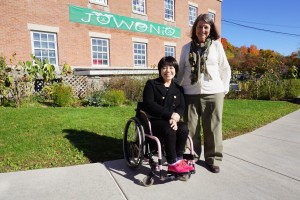
Jowonio School, a non-profit pre-school, focus on diversity and inclusion education in Syracuse, NY.
The School of Education in Syracuse University established this school in 1969.
Each child at Jowonio has a different background.
You can see their differences visually like the color of their eyes or skin, and also invisibly, such as their mother languages.
In addition, children with various kinds of disabilities, such as mobility disability, down syndrome, or deaf, are included in a regular class.
The total number of students is approximately 170, and 68 students of them have disabilities.
I wonder how all children from different backgrounds can learn at the same classroom.
There are 5 elements I found that that answer to my question.
1. Multiple teachers
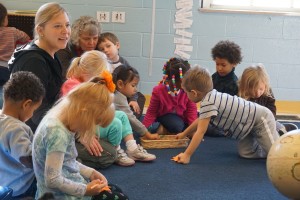
There are multiple teachers in one class.
Each child with disabilities has IEP (Individual Education Plan), and one teacher is assigned to help one child if he/she needs the support according to IEP.
For children whose mother language is not English, teachers use the most effective teaching methods like a visual or hearing educational materials which the children can understand more easily.
2. An environment of inclusion of differences

Each classroom has different decorating.
There are some posters help children to learn about the differences of their classmates.
For example, skin color, native language…and sign language chart!
Even young children can use simple sign language here.
3. A class room that help each student to grow individual’s speciality
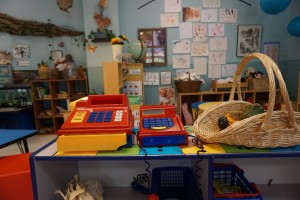
Children can grow their interests and abilities to touch, see, and listen to many things in the classroom.
There are simulation experience areas which children can cook, use PC, buy/sell products.
In this school, the children the same classroom are not instructed to focus one single task.
They have more time to strengthen their individual speciality.
4. Full supported therapy service

There are occupational therapist, speech therapist, and physical therapist.
In keeping with IEP, those therapy services are offered to the children.
There is a room with special equipments for physical training in the school.
It reminds me of a rehabilitation room at a hospital in Japan.
But here in Jowonio School, the training facility is inside the school.
5. Warm support from parents and the local community
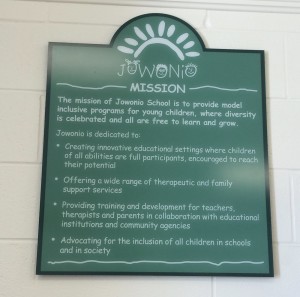
Many parents support school events as volunteers.
Also they donate their children’s clothes or toys which the children don’t need at home.
I found the neighbor bakery donated lots of breads too.
The school has many supports from not only parents but also the whole community.
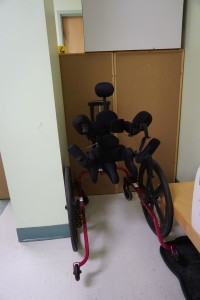
As wheelchair user, I checked ramps, elevator, and wheelchair accessible restrooms in the school.
Also I found “Kidwalk”.
Have you seen this before?
Kidwalk supports the kids who don’t have ability of walking by themselves.
It can be used inside and outside.
Compared to a regular wheelchair, Kidwalk helps children to move their legs and its hands free design allows the children to touch, feel and learn from their surroundings.
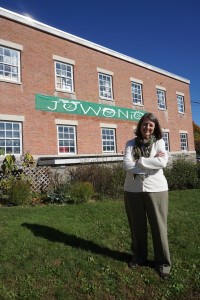
Message from Ms. Ellen Barnes, Director
We have students from many countries and cultures and we find that young children can become friends with any peers as long as the teachers model respect and positive social skills.
Children might be initially uncomfortable when a child looks very different, but they learn to care for each other over time.
Our community (and America in general) is a diverse one where people are from many backgrounds, religions, abilities; we hope that children will grow to welcome everyone and see all peers as potential friends.
“Children grow as they look what adults do”
We often say that. Children learn and acquire thinking and doing from adults around them.
In Japan, we tend to separate the non-disabled and disabled children starting at education stage.
Also more people think that talking about disability is a taboo.
Those environments created by adults have a big impact on children.
Although it is not easy to create a learning environment like Jowonio, we can still do a lot more things at each school and community.
Children who can accept and respect individual’s difference and value would support the future of Japan strongly.
